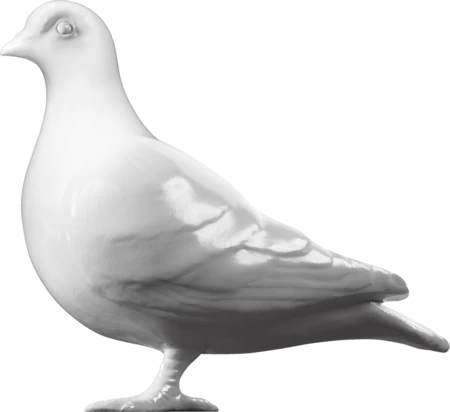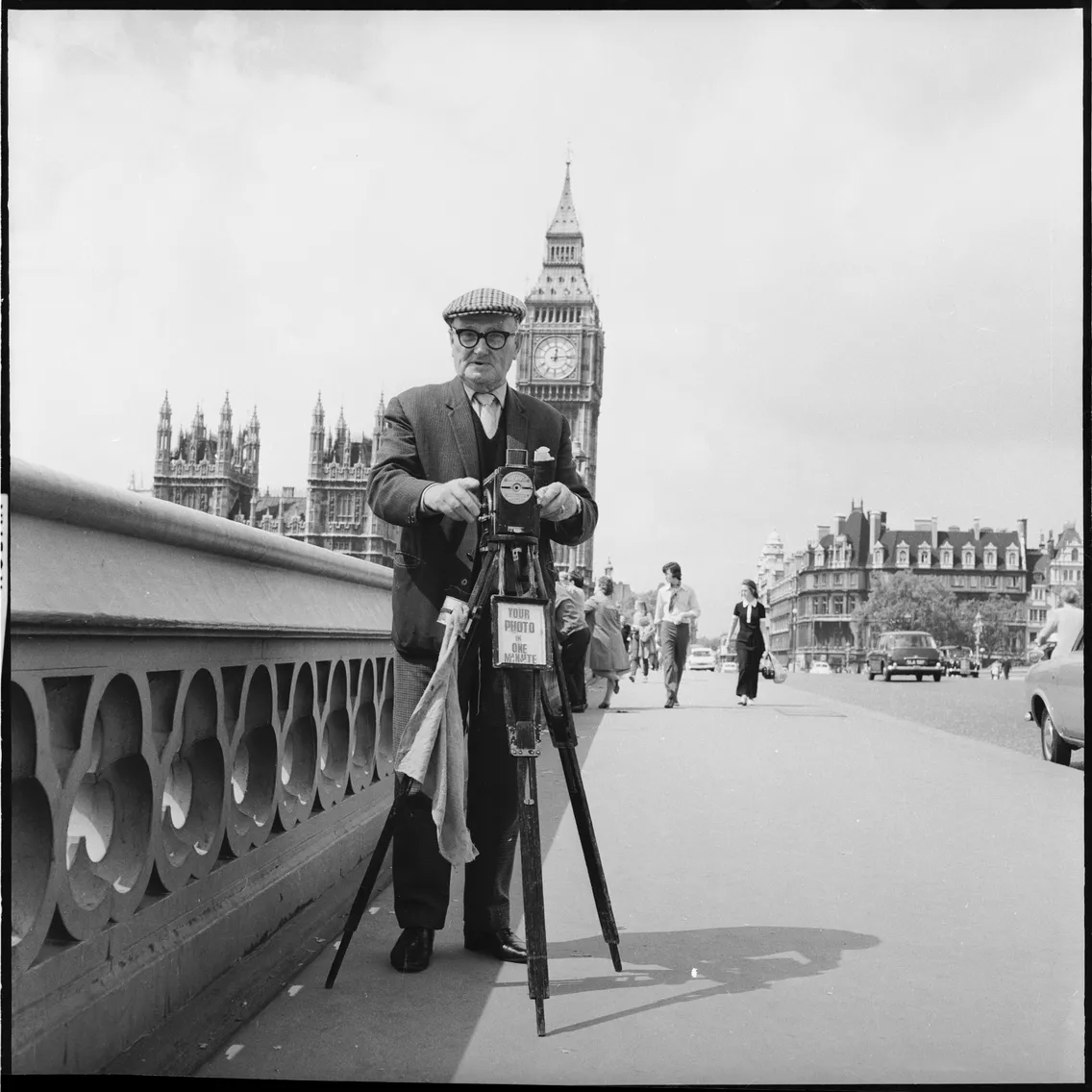26 August 2016 — By Anna Sparham
That's me! Finding yourself in historical photographs
As keepers of historical photographs, we often get enquiries from people who might have seen past version of themselves in photos in our collection. Here are some who got in touch, sharing some fascinating stories behind those shots.
As Curator of Photographs, occasionally someone writes to tell me they have actually spotted themselves or a relative within a photograph the museum has either published online or exhibited. In recent months there seems to have been a running spate of this, each with fascinating stories behind their finds.
The powerful impact of finding yourself in photos
My correspondents usually tell me something about the given scene or location: a workplace or event or a street they once lived in. Or I might be offered more information about the scenario.
Sometimes, there isn’t much to tell, only a desire to share their connection with the image they’ve encountered. However, when someone is actually present in a picture they haven’t seen before, it brings them a great thrill. A wonderful surprise from the past and a mini victory of discovery.
As the curator who has put that image out there, it feels very rewarding too, knowing you’ve played a part in uniting image with subject. It can be very powerful, whether the photograph is really well known or not.
I love, for example, The Guardian’s feature ‘That’s me in the Picture’ for giving a famed photograph an alternative and often captivating side story.
London nursery school memories rediscovered

Children drinking milk at Sumner Nursery School, Peckham, 1959. One of the girls from the school got in touch to see if we had any photos of her. We did!
In February this year, I received an email from a woman who had spotted a photograph of the nursery school in Peckham in our online collections, which she attended in 1959. She wrote on the off chance that we might hold more photographs taken there as she could vividly remember some prints once belonging to her mother of her 'dressing up' at the nursery. The prints were gone, and she longed to see the images again.
Henry Grant's archive of London life
The photograph she’d seen was by freelance photographer Henry Grant. We hold his entire archive of black and white photographs taken in London from the late 1940s through to the 1980s. He arranged this archive into a vast series of contact sheets and corresponding negatives, which capture the spectrum of London life over the years.

A young girl playing dressing up at Sumner Nursery School, Peckham, 1959.
An active socialist, Grant extensively documented public services such as the NHS and schools, including Sumner Nursery School, where he took 64 pictures in 1958. Although I thought it unlikely that she would find the specific photographs she was searching for, I sent her some low-resolution snaps of the rest of the contact sheet. There, in frames 18 and 30, was indeed a young girl – the enquirer in question.
This happy customer was delighted to have been reunited with these images, ordering prints from our picture library. She shared rekindled memories with me such as the little ‘half-pint’ doors she used to walk through at the nursery and the headmistress’ name, Miss Cronin.
Mod culture in 1960s Carnaby Street

Two young men, Carnaby Street, 1967. The man on the left contacted the museum after spotting this photo.
Just last week, a man wrote to tell me that he’s the man on the left in this picture, another by Henry Grant. He’d been told that a photograph of him had been spotted in a book about Carnaby Street. So, he had sought out the book and looked online to eventually discover it in our collections.
The image strikes me for the slight awkwardness between the young men and the camera. Are they keen to pose, reluctant, playing up to an expected role? Were they just hanging out or were they asked to stand there? Keen to know more I requested a little background and was pleased to be offered a glimpse into his mod life at that time.
“It’s all been quite bizarre. The photo has brought it all back – we never had cameras and taking a selfie would not have been cool”
I’ve learnt about the clubs he attended, from the mod scene All Nighters in Tottenham to La Discotheque in Wardour Street. The clothes he sought out, the range of jobs he pursued and how what you wore for the role dictated which he would take up.
Finally, I really liked his comment: “It’s all been quite bizarre. The photo has brought it all back – we never had cameras and taking a selfie would not have been cool.” A contemporary reflection upon a photograph almost 50 years old.
Frederick Wilfred's candid street photography

A young boy and horse, London, about 1953. The boy found this image online and got in touch with the museum.
In January, I was contacted by a man sharing his personal find while flicking through a 2012 edition of Amateur Photographer. The magazine included a feature on a small display of work we were showing at the museum. This was a recent acquisition I made of photographs by Frederick Wilfred, a wedding photographer, who happened to have made some remarkable street photographs in the 1950s. Wilfred died in 2010 and his son approached the museum, offering for us to make prints from digital scans of the original negatives.
They are wonderful images, but they were not annotated in any way. Therefore, no details of individuals or locations were recorded. By coincidence, this gentleman turned a page of a magazine to suddenly see a photograph of himself as a young boy.
He claimed to be the lad stood next to the horse in this wonderful composition, photographed during a trip to London with his parents around 1952–1953. He was, of course, amazed to see it through this chance encounter.
Christina Broom exhibition reveals royal links

Postillion at the Royal Mews, about 1908, photographed by Christina Broom.
After the London Museum Docklands' exhibition ‘Soldiers and Suffragettes: The photography of Christina Broom’ exhibition closed in November 2015, I was contacted by someone who visited close to the last day.
This time, it was me who was perhaps even more pleased about the connection than the individual in question. I had spent the previous two years gathering information and researching into the life of Christina Broom, about which very few primary sources exist. This exhibition visitor saw a photograph on the wall of a Postillion at the Royal Mews – his grandfather.
Behind the scenes at Buckingham Palace
He worked at the Buckingham Palace from the reign of King Edward VII until after the Second World War. As he served in the Royal Household his wife and children lived on site in the Royal Mews too. Broom was a regular visitor to the Mews, photographing there for almost 30 years and selling her work from a small stall outside the gates of the Riding School.

Footmen and Postillion at the Royal Mews, date unknown. Photographed by Christina Broom.
The man who contacted me told how he had long known about Mrs Broom from the stories his father had shared with him of his time living in the Mews. He and his siblings had even helped Broom out on her stall, acting as her ‘representatives’ and sharing her business cards with potential customers. Their father, the Postillion, helped sell postcards of himself made by Broom to tourists.
Broom had become well acquainted with the family. She had photographed them several times, and those photographs had been passed down the generations. The museum holds several thousand Broom images, including many of the Royal Mews staff.

First Life Guards mobilising at Knightsbridge Barracks to leave for France, August 1914. Photographed by Christina Broom. They were destined for Mons.
Stomping grounds and anonymous subjects
When I was developing our 2016 exhibition ‘Stomping Grounds: Photographs by Dick Scott-Stewart’, I had initially aimed to identify some people within the images, particularly those taken within the Blitz club.
I guess I was looking for early records of, or connections with, personalities that had risen to stardom through that scene. Ultimately, however, I was pleased that I didn’t have famous names to acknowledge for this encourages viewers to look at the images in their own right and observe the subjects without the distraction of celebrity.

Outside the Blitz Club, Covent Garden, 1981. Photographed by Dick Scott-Stewart.
With all the publicity that surrounds a photography exhibition, an individual recognising themselves among the pictures is perhaps to be expected. Although I didn’t identify people in the photographs within the Stomping Grounds exhibition (which ended September 2016), nobody has contacted me directly yet.
However, I was quite intrigued by the fact that one visitor saw fit to scrawl a name directly onto the wall of the exhibition directing a line towards a particular framed photograph. That’s one way to do it, I guess.
Anna Sparham is Curator of Photographs at London Museum.


